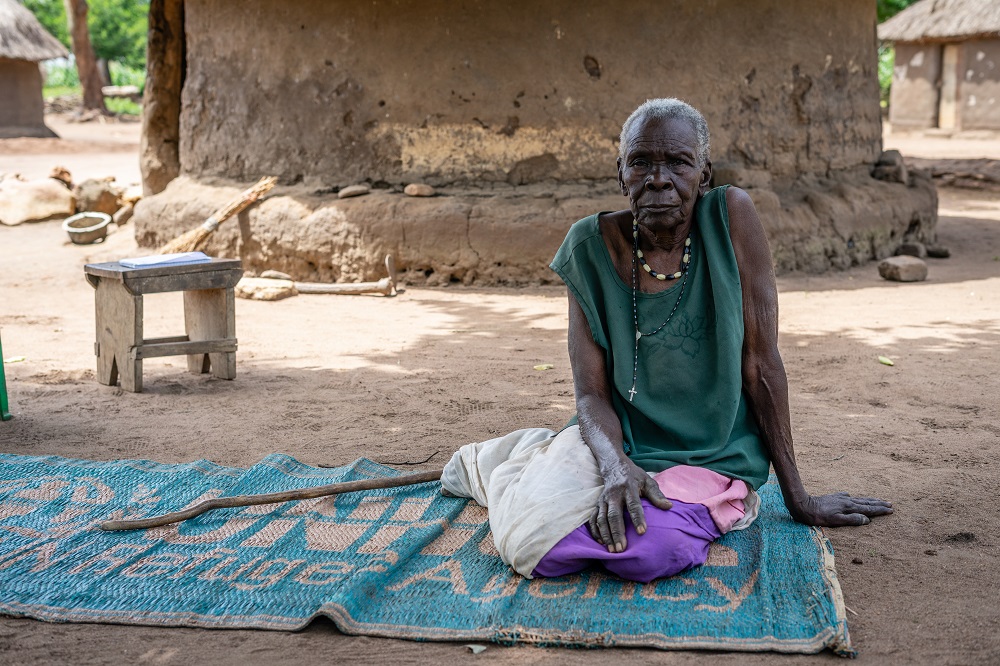
Are we really interested in what happens to people in older age? If we take a look at the Sustainable Development Goals we might think so, with their strong message of “leave no one behind”.
Many of the 17 goals remind us to include older people in the development and implementation of policies and practices relating to improving health, reducing poverty and hunger, providing decent employment, and promoting safe and peaceful societies. They also make clear that the aims of promoting gender equality and reducing inequalities more generally are as important to older people as they are to younger generations.
How do we turn these objectives into practical reality?
Here we face some big challenges. This became very clear to us in the preparation of the recently published policy discussion paper Transforming gender relations in an ageing world. We know some headline facts: many older women live in poverty, experience ill health, are subjected to violence and abuse, are expected to carry unreasonable amounts of caring responsibilities and so on.
But even these “facts” are built on shaky knowledge foundations. We know very little about the effect of cumulative gender processes which affect all gendered identities. Very little information – including national statistics – is collected in a systematic way to capture the effects of gender on ageing.
As any older person will tell you, we do not suddenly become “the elderly” once we reach 60 and move through the next 10, 20 or 30 years of our lives in this category any more than “the young” remain the same from 0 to 30.
We still make choices over how we live our lives. Our experiences continue to be affected by our circumstances. We do not become sexless or lose our gender identity. But you might think so from looking at the way in which data is collected.
To give just one example, an indicator for SDG 5 on gender equality refers to the “proportion of women aged 15-49 years who make their own informed decisions regarding sexual relations, contraceptive use and reproductive health care”. This indicator ignores the experiences of women over the age of 49 when it comes to sexual relations and reproductive health.
On one hand, the fact that the world is ageing is a great success story. It is a cause for celebration that more people can live longer lives. However, the issue of ageism – discrimination based upon age – is not recognised or treated seriously by policy makers and sadly is often overlooked by advocacy groups, including those with a strong record on gender issues. We must shift from consciously or unconsciously only valuing the “productive” capabilities of people, whether women or men, as well as the dominant focus on “reproductive” stages in their lives, such as girls and pre-menopausal women.
The World Health Organization, the World Bank and some development agencies are realising there is a pressing need for more sustained research to build up a much clearer picture of what happens when we become older.
Governments, NGOs and research bodies need to fund and commission data collection and wide-ranging research, as well as develop and support projects initiated by older people to learn from their experiences.
As our discussion paper makes clear, we need to understand how gender works over the life course. It adopts an analytical framework for policy and advocacy that adapts an “intersecting inequalities” approach to development policy by adding a life course perspective. Capabilities in older age are determined by myriad intersecting inequalities, including those produced through gender processes and the effects of accumulating assets and liabilities over a life course.
What does the lifecourse approach mean in terms of ageing?
Despite our efforts over a lifetime, some of us arrive at older age with very few economic, social and cultural assets to call upon. This may be because we have experienced war, conflict or devastating natural disaster. We may have been born into a poor family or into a community that is not treated well by others perhaps because of their caste, religion or ethnicity. We may have been born with or acquire an impairment.
Gender-based inequalities can start from before we are born and continue over a lifetime. Our lives do not necessarily proceed in neat stages, but rather in a fluid and dynamic manner. Impairments can interact with social, cultural and economic determinants and environmental aspects across the life course, resulting in differing outcomes for men and women. The effects of gender processes do not stop when we get older. Ageism in older age often adds a new intersecting inequality.
In our discussion paper, we use the lens of older age to reflect back on the effects of the earlier life stages, which largely determine the status of older people. We also highlight the effects of ageism, which is often particularly pernicious in older age.
Research and data collection is not enough of course. Most gender equality advocacy for women and girls focuses on adolescents and women who are of reproductive age, often overlooking the older generation. We argue that organisations with expertise on issues facing older people, such as HelpAge International, would benefit from adopting a gendered approach to the life course, and gender equality-focused NGOs would equally benefit from adopting a lifecourse approach to include older women and men.
Partnerships could be very fruitful for both by sharing expertise without losing a core focus on gender issues or ageing. We think that a gendered approach to the life course would offer a useful lens for both.
